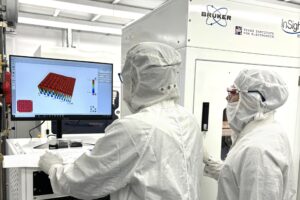AUSTIN, Texas—Scientists have determined that a single gene’s activity is enough to cause changes in embryo cells that are needed to form a normal brain and spinal cord, an event whose disruption leads to birth defects such as spina bifida.
Principal investigator John B. Wallingford from The University of Texas at Austin and his colleagues have determined that a gene called shroom initiates changes in the shape of a ribbon of embryonic cells called the neural plate. The gene produces a protein that they revealed causes neural plate cells to roll up into a tube that seals along the seam. This sealed tube develops into the brain and spinal cord. If the folding step or other steps in the process, called neural tube closure, fail to occur in the first month of pregnancy, a developing baby is aborted spontaneously or reaches term but has life-threatening spina bifida or anencephaly.
“The more we know about how this process of neural tube closure works, the better we will be able to attack these defects,” said Wallingford, an assistant professor of molecular cell and developmental biology and a member of the College of Natural Sciences’ Institute for Cellular and Molecular Biology.
Wallingford conducted the study on frog embryos, which develop similarly to human embryos, while at the University of California, Berkeley. He studied the frogs with colleagues from Harvard Medical School and the University of Pittsburgh who are co-authors on the paper about this research in the Dec. 16 issue of Current Biology.
Spina bifida occurs in about one in 2,000 births when the bottom end of the neural tube fails to seal. The bones of the spine (vertebrae) in the unsealed area fail to develop, and the spinal cord remains open and continuous with the skin of the back. When the unsealed area is small, the defect is minor, but leg paralysis and lack of bladder and bowel control occur in more severe cases. If the top end of the neural tube fails to close instead, anencephaly develops, in which developing babies that survive until birth often die within hours due to an underdeveloped brain and incomplete skull.
Mice, often used to model human diseases, have multiple genes identified as being involved in nervous system development. But their use is limited in studyingthe role of developmental genes since their embryos lie hidden within the uteruswhere their effects are difficult to visualize. To learn more, Wallingford andhis colleagues focused on the African clawed frog, Xenopus leavis, whose largeembryos develop outside the body and undergo neural tube closure like mice, humansand other vertebrates.
In Xenopus embryos at the earliest stages of development, the presence of shroom caused cells of the neural tube to constrict, or shrink, on the side of the cellsfacing inside the tube. That shrinkage must occur before neural plate foldingcan occur. When shroom function was inhibited in frog embryos, constriction didn’toccur, verifying the gene’s role in producing the shape change.
The protein produced from the shroom gene is known to attach to the molecules that form rope-like filaments inside cells that regulate their shape. The filaments are composed of the protein actin, which the researchers found became more concentrated at the side of the neural tube cells before constriction.
“We think that the shroom protein is going to be very directly involved in organizing those filaments to change the shape of the cell,” Wallingford said.
He will study this organization in frog embryos using fluorescent imaging methods that allow the interaction of different proteins inside neural tube cells to be visualized, and by making time-lapsed videos of developing embryos.
“With these approaches, we hope to find out which proteins interact with the shroom protein to influence later steps in neural tube closure,” Wallingford said.
For more information contact: Barbra Rodriguez, College of Natural Sciences, 512-232-0675.



